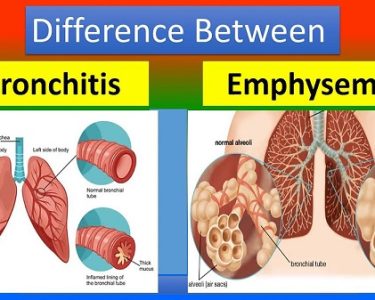Understanding whether bronchiectasis contagious or not is one of the most common questions people ask after being diagnosed or learning about this chronic lung condition. Bronchiectasis can be confusing because its symptoms often resemble other respiratory diseases such as chronic bronchitis or emphysema. However, it’s essential to know that bronchiectasis is not an infection that can be passed from one person to another. Instead, it is a structural problem of the lungs that develops over time due to repeated infections, inflammation, or lung damage.
Before diving into the myths and facts surrounding whether is bronchiectasis contagious, let’s first explore what this condition really is, what causes it, and how it affects your lungs.
What Is Bronchiectasis?
Bronchiectasis is a long-term lung condition in which the bronchial tubes — the airways that carry air in and out of the lungs — become abnormally widened, thickened, and scarred. This structural damage makes it difficult for the lungs to clear mucus effectively. As a result, mucus accumulates, creating an ideal environment for bacteria to grow, leading to recurrent infections.
Over time, this cycle of infection and inflammation further damages the airways, making the condition progressively worse if not managed properly. The main symptoms include a chronic productive cough, frequent chest infections, fatigue, and shortness of breath.
Although bronchiectasis can occur at any age, it often develops after severe lung infections such as pneumonia, tuberculosis, or whooping cough. It can also result from immune system disorders, genetic conditions like cystic fibrosis, or chronic inflammatory diseases.
It’s important to note that while the condition itself is not contagious, the infections that occur in people with bronchiectasis can sometimes be spread to others through coughing or sneezing. However, this doesn’t mean the disease itself can be transmitted.
Is Bronchiectasis Contagious? The Straightforward Answer
The direct answer to is bronchiectasis contagious is no. Bronchiectasis is not contagious. It cannot be passed from one person to another through physical contact, air droplets, or any other means. The disease results from damage inside an individual’s lungs, not from a contagious infection spreading between people.
Doctors emphasize that bronchiectasis is a chronic, non-infectious lung condition, even though infections can play a role in its development and flare-ups. This distinction is essential to avoid unnecessary fear or social stigma.
However, if a person with bronchiectasis is infected with certain bacteria (for example, Pseudomonas aeruginosa or Mycobacterium avium complex), these bacteria can potentially spread — but only the infection, not bronchiectasis itself. The structure of the lungs doesn’t change in others just because they are exposed to these germs.
Why People Mistakenly Think Bronchiectasis Is Contagious
The confusion about whether bronchiectasis disease is contagious arises because the symptoms often resemble those of infectious diseases such as tuberculosis or chronic bronchitis. Persistent coughing, sputum production, and chest infections may lead people to assume it’s an infectious condition.
In reality, bronchiectasis is the result of prior lung infections or inflammation that damaged the airways, not a new infection spreading between people. For instance, a person may develop bronchiectasis after years of recurrent pneumonia, or due to an immune disorder that prevents the lungs from clearing bacteria effectively.
Another reason for the misconception is that bronchiectasis often coexists with conditions that can spread, such as bacterial infections. However, even if bacteria are transmitted, the recipient will not develop bronchiectasis unless their lungs become damaged over time.
Bronchiectasis vs Emphysema — Understanding the Difference
When talking about lung diseases, many people compare bronchiectasis vs emphysema because both affect breathing and cause chronic cough. However, emphysema involves damage to the tiny air sacs (alveoli) in the lungs, leading to reduced oxygen exchange, while bronchiectasis affects the airways themselves. Emphysema is often caused by smoking or long-term exposure to irritants, whereas bronchiectasis usually develops from infections or immune-related causes.
While neither condition is contagious, both require ongoing management, regular monitoring, and lifestyle adjustments to maintain lung function and quality of life.
How Does Bronchiectasis Develop?
To understand why bronchiectasis is it contagious is a myth, it helps to know how the condition forms. The process typically follows this pattern:
- Initial Lung Damage: A severe lung infection or an immune deficiency weakens the bronchial walls.
- Chronic Inflammation: Inflammation persists even after the infection clears, causing the airways to stretch and lose elasticity.
- Mucus Accumulation: The damaged airways cannot clear mucus efficiently.
- Recurrent Infections: Trapped mucus allows bacteria to grow, leading to repeated infections that further damage the lungs.
This cycle repeats itself over time, leading to chronic bronchiectasis. Since the process occurs within an individual’s lungs, it cannot be transferred to another person.
Common Causes of Bronchiectasis
Bronchiectasis can result from various underlying causes, including:
- Severe lung infections (such as pneumonia or tuberculosis)
- Cystic fibrosis (a genetic condition)
- Primary ciliary dyskinesia (a disorder affecting mucus clearance)
- Immune system deficiencies
- Obstructions caused by tumors or foreign bodies
- Autoimmune diseases such as rheumatoid arthritis or inflammatory bowel disease
Each cause leads to damage in the airways, setting the stage for chronic symptoms and repeated infections.
Symptoms to Watch For
Recognizing the symptoms early can help in timely diagnosis and management. Common signs include:
- Persistent cough with thick mucus
- Frequent chest infections
- Wheezing or shortness of breath
- Fatigue or weakness
- Chest pain or tightness
- Coughing up blood (in severe cases)
These symptoms often worsen during flare-ups or infections. If you experience them regularly, consult a pulmonologist for evaluation.
Diagnosis and Tests
Doctors diagnose bronchiectasis using a combination of imaging and lab tests. The high-resolution CT (HRCT) scan is the most reliable diagnostic tool, as it shows the structural damage and widening of the airways. Other tests may include:
- Sputum cultures to detect bacteria or fungi
- Lung function tests to measure breathing capacity
- Blood tests to identify immune system issues
- Bronchoscopy to inspect the airways directly
An early diagnosis helps manage symptoms effectively and prevent further lung damage.
Treatment Options for Bronchiectasis
Even though bronchiectasis contagious is a myth, the condition itself needs consistent treatment. The primary goal is to manage symptoms, prevent infections, and slow down disease progression. Treatments may include:
Airway Clearance Techniques
Physical therapy or chest physiotherapy helps loosen mucus so it can be expelled more easily. Devices like flutter valves or oscillatory vests may also assist with mucus drainage.
Medications
Doctors may prescribe antibiotics during flare-ups, bronchodilators to open airways, and corticosteroids to reduce inflammation.
Vaccinations
Getting vaccinated against influenza and pneumonia helps prevent infections that can worsen bronchiectasis.
Pulmonary Rehabilitation
This program combines exercise, education, and breathing techniques to improve lung efficiency and endurance.
Lifestyle Modifications
Quitting smoking, staying hydrated, and eating a balanced diet are vital for lung health.
New and Emerging Treatments
Research into new treatments for bronchiectasis is ongoing, with scientists focusing on therapies that target inflammation and infection more effectively. Advances include inhaled antibiotics, mucus-thinning agents, and anti-inflammatory compounds that could reduce flare-ups and improve quality of life. While there’s no cure yet, modern medicine continues to improve the management of bronchiectasis, helping patients lead active, fulfilling lives.
Natural and Herbal Remedies for Bronchiectasis
In addition to medical treatments, some individuals explore holistic approaches such as treatment of bronchiectasis by natural herbal remedies. These may include herbal expectorants, immune boosters, or anti-inflammatory herbs that support lung function. However, it’s crucial to consult a healthcare professional before using any alternative therapies to ensure safety and compatibility with prescribed medications.
Some patients find relief through taking control of bronchiectasis with herbal medicines, which focus on enhancing overall respiratory health, improving mucus clearance, and strengthening immunity. Herbal therapies should complement—not replace—medical treatment.
Herbal Support and Natural Approaches
Certain herbal formulas are designed as effective and natural bronchiectasis therapies for better breathing, helping to manage chronic symptoms like cough and mucus buildup. Ingredients such as licorice root, ginger, turmeric, and mullein are known for their soothing and anti-inflammatory properties. These natural aids may enhance lung resilience and reduce the frequency of infections.
Among herbal options, bronchiectasis herbal treatment programs aim to promote better breathing and airway health using time-tested plant-based ingredients. These are particularly helpful for patients seeking gentle, long-term support alongside conventional therapy.
The Role of Herbal Supplements
Some herbal formulations, such as Talsical – Herbal Supplement for Bronchiectasis, have been developed to provide respiratory support and promote lung function. These supplements typically contain a blend of natural extracts believed to help reduce inflammation, enhance immunity, and assist in mucus clearance. While promising, such options should always be used under professional guidance to ensure effectiveness and safety.
Living with Bronchiectasis
Managing bronchiectasis requires consistency, patience, and lifestyle awareness. Here are some tips for living well with the condition:
- Stay Active: Light exercise like walking or yoga improves lung capacity and circulation.
- Practice Airway Clearance Daily: Keep mucus from building up in the lungs.
- Stay Hydrated: Water helps thin mucus for easier removal.
- Avoid Pollutants: Stay away from smoke, fumes, and allergens that irritate the lungs.
- Monitor Infections: Report any changes in sputum color, volume, or fever to your doctor.
Support groups and patient communities can also provide emotional support and practical advice for day-to-day management.
Conclusion: Bronchiectasis Is Not Contagious — But It Is Manageable
So, is bronchiectasis contagious? The clear and scientific answer is no. The disease itself cannot spread from one person to another. It develops due to chronic lung damage, not due to contagious pathogens. While infections related to bronchiectasis can sometimes spread, they do not cause the structural airway changes that define the disease.
Early diagnosis, proper medical management, and a combination of lifestyle adjustments and natural support can help individuals maintain healthy lung function and enjoy a better quality of life.
Bronchiectasis may be a chronic condition, but it’s one that can be effectively managed — especially when patients stay informed, proactive, and committed to their treatment plan.




